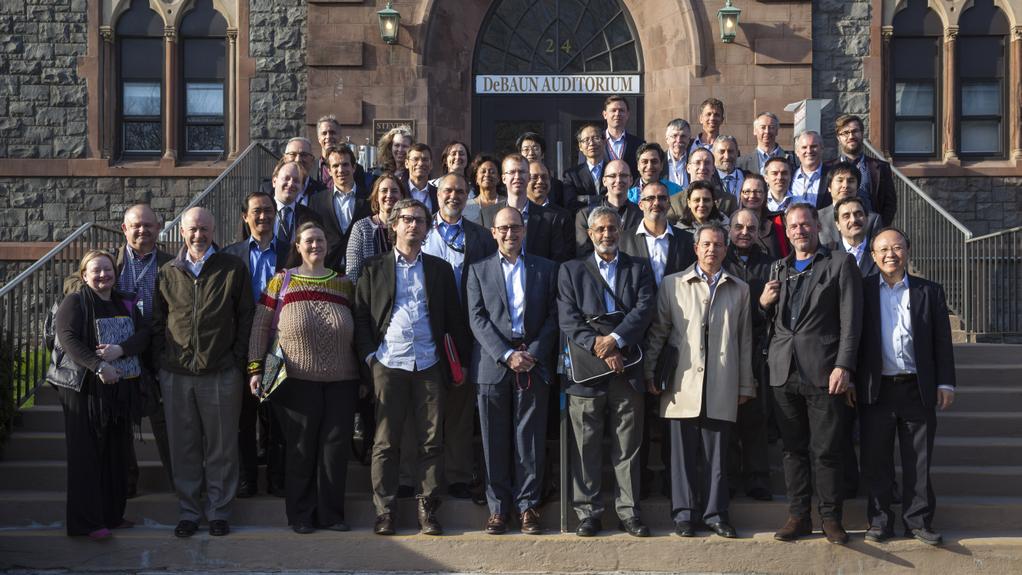
Institute of Technology (photo via Richard Clegg on Twitter)
Chad Staddon and Wilhelmina Drayton from the International Water Security Network and the University of the West of England participated in the Lloyd’s Register Foundation International Workshop on The Future of Resilience Engineering – an event hosted by Stevens Institute of Technology in Hoboken, New Jersey from 15-17 April. It brought together experts from a variety of fields and professions, spanning twelve countries and five continents. The aim of the workshop was to identify gaps in emerging thinking about resilience engineering, which could be the focus of future research and development.
Day one of the workshop offered every attendee the opportunity to present their perspectives and key challenges on Resilience Engineering. The presentations were varied, and it quickly became apparent that not only are there conceptual gaps in the field of Resilience Engineering, but there is also a need to clearly define what we mean by the term. Chad Staddon and other delegates pointed to the importance of recognising the multidimensional nature of resilience. Resilience against flooding, for example, needs to be thought of as a scaled concept linking personal, community, national and global scales.
Wilhelmina Drayton presented her perspectives on resilience using the backdrop of her PhD research, which is looking at mechanisms to enable the large scale implementation of small scale re-permeation, with a focus on private gardens. The research, which will use a case study within South East London, looks at the increasing water sensitivity experienced in London, with an over-burdened surface water network not capable of managing the run-off generated by many recent storms (resulting in flooding), and the predicted water shortfall that London will face within the next few decades (indeed, 2012 saw the South of England experience the ‘wettest drought’ in memory, as water scarcity was followed in quick succession by flooding). This demonstrates a lack of resilience for the UK’s capital city with regards to water security, and is just one example of the multidisciplinary approach to resilience that is required since clever engineering needs to be combined with clever institution-building and clever public communication and engagement for successful outcomes. The luncheon speech, by Daniel Zarrilli, Director of the New York City Mayor’s Office for Resilience and Recovery, used anecdotes from the aftermath of Superstorm Sandy to poignantly underline the basic messages of the first day.
On day two of the workshop, delegates focused on resilience issues within six critical sectors, including ‘food and water’, ‘IT and communications’ and ‘healthcare and medical’, once again highlighting the need for multidimensionality and multidisciplinarity in our approach to resilience engineering. On the third day participants presented brief ‘elevator pitches’ for funding priorities in this area, for the consideration of the Lloyd’s Register Foundation.
Following the workshop a report will be compiled on all of the ideas and challenges that were developed during the three days, and published by Lloyd’s Register Foundation. The Foundation hope that by early identification of the key challenges within the field which are yet to have any research focus they can assist the delivery of meaningful work which will support their mission to enhance safety of life and property.
